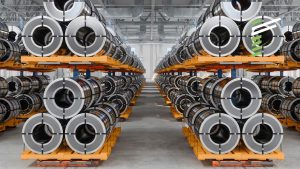At a Glance
- In the current competitive environment, FMCG companies are adopting strategies such as shrinkflation to preserve margins.
- Margins are even tighter as they sell their products through intermediaries, who usually take a cut of the purchase price.
- Cost optimisation in the manufacturing and distribution processes is one of the four key levers to combat margin erosion.
Sluggish economic growth in some of the world’s major economies had a significant impact on material costs. This situation has led to a phenomenon known as shrinkflation, where Fast Moving Consumer Goods (FMCG) companies adopt strategies to mitigate rising production costs by reducing the size or quantity of their products.
FMCGs, particularly those that do not sell directly to end-users, typically have multiple distribution channels, including supermarkets, wholesalers, and retailers. In the current operating environment as they try to protect margins through shrinkflation, their margins may become even tighter as intermediaries usually take a cut of the purchase price.
Four key levers to combat margin erosion
Margin erosion can be caused by a number of factors, including the pricing strategies of existing or new competitors seeking to gain a greater market share. In addition, the competitive landscape is intensified when products are displayed alongside competitors on store shelves. In such scenarios, FMCG companies can turn to four key levers:
- Cost optimisation: Streamline costs in the manufacturing and distribution processes.
- Distribution optimisation: Significant spending occurs during the distribution of products from factory gates to store shelves. Optimising this aspect can lead to cost reductions.
- Price maximisation: This involves clever pricing strategies, high marketing spend, strategic product placement, and in-store promotions.
- Volume maximisation: Sales volume can be increased through high product availability and attractive discounts such as “2-for-1” offers.
By using these four levers, FMCG companies can better address the challenges of shrinking profit margins and fierce competition in the marketplace. This article examines three aspects of the cost optimisation lever only.
Achieving cost optimisation
Identifying cost saving measures at each stage can contribute to overall profitability. Three primary cost optimisation measures are outlined here:
1. Procurement
Assessing the pain points of procurement is necessary to learn how to improve. When starting a procurement analysis, consider these two aspects:
- Reduce unit costs: This applies to both commodity and bespoke products and can be achieved through partnerships and extended agreements with preferred suppliers.
- Reduce the absolute amount purchased: This can be achieved by improving control over forecasting and inventory levels throughout the supply chain.
When conducting a procurement analysis, FMCG companies will often spot the following gaps:
- A lack of or poor adherence to, a competitive quoting process. Sometimes, companies choose to deal with familiar contacts because they believe it is easier.
- Irregular price reviews long-term contracts, allowing suppliers to pass on unjustified inflationary increases that are not justified by the market.
- Incomplete or outdated supplier lists, leading to repeated engagements with the same, limited group of suppliers, while neglecting potential newcomers.

How to use the skills matrix to improve team performance


You Don’t Own Your Brand

Ready for a change in your organisation?
2. Asset utilisation
As profit margins are tight for FMCG players, optimising asset utilisation is key to improving profitability. FMCG is a high-volume business, and a short 10-minute delay in production can result in the loss of a significant number of units. While measuring performance through metrics such as Overall Equipment Efficiency (OEE) or similar methods can identify the problem, it does not solve it.
Briefly, here are some aspects to analyse when FMCG companies are looking to increase throughput:
- Downtime analysis: Assess the extent of downtime and identify the causes of both planned and unplanned interruption in production.
- Machine studies: Examine how machines are configured, controlled, and the parameters used to manage their speed.
3. Workforce productivity
Employee costs are the largest cost in most FMCG companies, so maximising workforce productivity is a critical factor for profitability. In order to analyse this, it is essential to understand the three types of workforce: direct, indirect, and staff.
The direct workforce is made up of individuals in manufacturing facilities, who are actively involved in production tasks on the assembly lines. The indirect workforce, sometimes referred to as the semi-variable workforce, includes those who support the manufacturing operations, such as maintenance staff, quality control (QC) personnel, tool makers, and warehouse staff.
The last group known as back-office staff, includes human resources (HR), finance, marketing and sales, and information technology (IT). They are usually salaried employees.
Workforce productivity analysis can be approached in two ways:
- Manpower utilisation analysis: This method is effective for areas that lend themselves to a detailed activity listing, including both direct and indirect labour.
- Restructuring for back-office staff: This approach focuses on optimising the productivity of staff in administrative roles. Key actions may include departmental consolidation, adjusting the size of workforce to match the organisation’s needs, centralising functions to improve efficiency and resource allocation, and considering outsourcing options for specific tasks or roles.
Getting buy-in
The impact of the COVID-19 pandemic and a series of unprecedented challenges resulting from sluggish economic growth have prompted companies to initiate cost optimisation initiatives. Their efforts are not only driven by economic imperatives, but also by the need to ensure sustainable growth in the future.
There are many factors that come into play when embarking on cost optimisation initiatives. Getting employee buy-in and commitment is one of the most important factors that can make or break an organisation’s drive for change.
Are you looking for change management experts to ensure that the new cost optimisation strategies are quickly adopted by your organisation?










